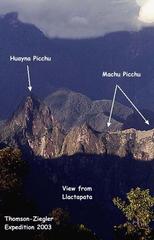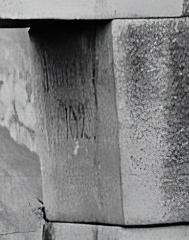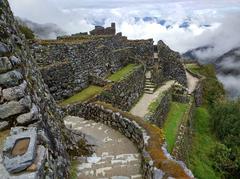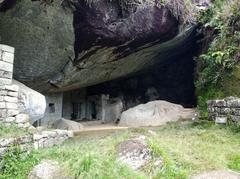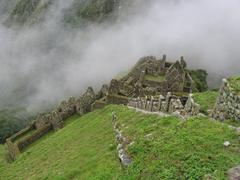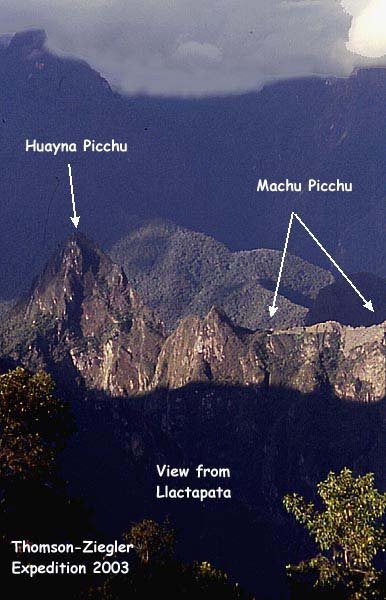
Llaqtapata Visiting Hours, Tickets, and Travel Guide Near Machu Picchu, Peru
Date: 14/06/2025
Introduction
Llaqtapata, perched on the lush slopes of the Peruvian Andes near the famed Machu Picchu, is a captivating archaeological site that offers a window into the complexities of Inca civilization. Overlooking the Urubamba Valley at approximately 2,840 meters above sea level, Llaqtapata—meaning “high town” in Quechua—features a sophisticated array of terraces, plazas, and ceremonial structures. While often overshadowed by Machu Picchu, Llaqtapata’s strategic location, historical significance, and tranquil atmosphere make it an essential destination for travelers seeking a deeper, quieter connection with Peru’s Inca heritage.
This guide delivers comprehensive information on Llaqtapata visiting hours, ticketing, travel tips, sustainable tourism practices, and conservation efforts. Whether you are a history enthusiast, trekker, or cultural traveler, Llaqtapata promises a rewarding and responsible adventure. For up-to-date information, consult the Peruvian Ministry of Culture and reputable tour operators such as Lorenzo Expeditions and Inca Trail Machu.
Table of Contents
- Origins and Etymology
- Discovery and Archaeological Exploration
- Architectural Features and Layout
- Function and Significance in the Inca Empire
- Visiting Llaqtapata
- Guided Tours and Special Events
- Conservation and Sustainable Tourism
- Nearby Attractions
- Frequently Asked Questions (FAQ)
- Summary and Travel Tips
- References and Further Reading
Origins and Etymology
The name Llaqtapata is derived from the Quechua words “llaqta” (place, town) and “pata” (elevated place, edge), reflecting its prominent position within the landscape. Situated at the confluence of the Cusichaca and Urubamba rivers, the site’s elevation and strategic location were integral to its dual roles as a ceremonial and administrative hub.
Discovery and Archaeological Exploration
Llaqtapata first gained international attention in 1912, when Hiram Bingham—on the same expedition that made Machu Picchu famous—documented the site. Dense vegetation kept it relatively obscure for decades, but renewed interest and systematic exploration began in the early 2000s, notably with the work of Thomson and Ziegler in 2003. Their research revealed Llaqtapata’s importance within the Inca road network, the Qhapaq Ñan, and its alignment with significant astronomical events (Lorenzo Expeditions; Inca Trail Machu).
Architectural Features and Layout
Llaqtapata is characterized by its terraced slopes, ceremonial plazas, stairways, and over 100 stone-built rooms. The terraces, extending over 600 meters in length and divided into multiple levels, exemplify the Inca’s advanced agricultural techniques and mastery of erosion control. Structures such as Pulpituyoc underscore the site’s ceremonial importance, while intricate stonework and multi-tiered layouts reflect the empire’s architectural prowess (Inca Trail Machu; Lorenzo Expeditions).
Function and Significance in the Inca Empire
Llaqtapata played a pivotal role as an administrative checkpoint, agricultural center, and ceremonial site. It was a vital node in the Qhapaq Ñan, serving travelers along the Inca Trail to Machu Picchu and supporting food supplies for regional settlements. Recent archaeological studies highlight its use for astronomical observations, with site alignments oriented to solstices and equinoxes—an embodiment of the Incas’ cosmological worldview (Lorenzo Expeditions; Inca Trail Machu).
Visiting Llaqtapata
Visiting Hours
Llaqtapata is generally open to visitors from 6:00 AM to 5:00 or 6:00 PM each day. Hours may be adjusted for conservation needs or weather conditions, so it is advisable to check with official sources or your tour operator prior to visiting.
Ticket Information
There is no standalone ticket required specifically for Llaqtapata. Access is typically included as part of authorized trekking routes such as the Inca Trail or Salkantay Trek. Permits for these treks are limited—especially in peak season (May to September)—and should be secured well in advance. Tickets and permits can be obtained via the official Ministry of Culture website or through authorized agencies (Inca Trail Machu; Salkantay Trek Machu).
Getting There
- Via the Inca Trail: Llaqtapata is a highlight on certain Inca Trail itineraries, though it is distinct from Patallacta, another nearby site. Confirm your route includes a visit if this is a priority.
- Via the Salkantay Trek: The Salkantay Trek passes by Llaqtapata on its way to Machu Picchu, offering panoramic views and a unique approach.
- From Aguas Calientes: Moderate hikes (4–6 hours one way) from Aguas Calientes or Santa Teresa are possible, often as organized excursions (The Tourist Checklist; Salkantay Trek Machu).
Accessibility and Travel Tips
- Physical Requirements: The trek to Llaqtapata is moderately challenging, with elevation changes and occasional steep sections. Acclimatize in Cusco or Aguas Calientes for at least 1–2 days prior to trekking.
- What to Bring: Sturdy hiking boots, layered clothing, sun and rain protection, reusable water bottles, snacks, and a basic first aid kit.
- Best Time to Visit: The dry season (May–September) offers the best conditions. Prepare for variable temperatures and sudden weather changes (Kimkim).
Guided Tours and Special Events
Many licensed operators offer guided treks to Llaqtapata, often as part of multi-day packages that include Machu Picchu and other Cusco historical sites. Expert guides provide valuable context on Inca history, local ecology, and cultural traditions. Occasionally, traditional ceremonies or festivals coincide with solstices or equinoxes, enriching the visit with cultural significance (Lorenzo Expeditions).
Conservation and Sustainable Tourism
Site Regulations and Preservation
Llaqtapata is protected by the Peruvian Ministry of Culture and subject to strict conservation measures. Visitors must stay on marked paths, refrain from touching or climbing on ruins, and follow all site staff instructions. During peak seasons, visitor numbers may be capped to prevent overuse and erosion (Kallpa Travel; Lorenzo Expeditions).
Sustainable Tourism Practices
- Eco-Friendly Trekking: Operators adhere to waste management protocols, ban single-use plastics, and support minimal-impact camping. Visitors are required to pack out all waste and use reusable containers (Kallpa Travel; Visit Machu Picchu).
- Community Engagement: Local communities benefit through employment as guides, porters, and hospitality providers. Community-based initiatives promote traditional crafts and foods, distributing tourism income equitably.
- Environmental Stewardship: Ongoing trail maintenance, reforestation, and biodiversity protection efforts are coordinated by local and international partners (Kuoda Travel).
Nearby Attractions
Llaqtapata can be paired with visits to Machu Picchu, the Sacred Valley, and other notable Cusco historical sites such as Wiñay Wayna and Patallacta. This multi-site approach enriches your understanding of the Inca world and maximizes your travel experience.
Frequently Asked Questions (FAQ)
Q: What are Llaqtapata’s visiting hours?
A: Llaqtapata is typically open from 6:00 AM to 5:00 or 6:00 PM. Verify with your tour operator or official sources prior to visiting.
Q: Do I need a special ticket for Llaqtapata?
A: No special ticket is required for the site itself; access is included with your Inca Trail or Salkantay Trek permit.
Q: Is Llaqtapata suitable for all ages?
A: The trek involves moderate physical exertion and uneven terrain. Those with mobility issues or young children should consult with tour providers.
Q: Are there facilities at Llaqtapata?
A: Facilities are minimal. Bring water and snacks; the nearest restrooms and shops are in nearby villages or at designated campsites.
Q: Can I visit Llaqtapata independently?
A: While independent visits are possible, guided tours are strongly recommended for safety, navigation, and historical context.
Summary and Travel Tips for Visiting Llaqtapata
Llaqtapata embodies the Inca Empire’s architectural skill, spiritual depth, and ecological awareness. Its terraces and ceremonial spaces offer immersive cultural experiences and panoramic Andean vistas. Thoughtful preparation—acclimatizing, bringing proper gear, and respecting conservation rules—ensures a rewarding and responsible visit.
Sustainable tourism practices, led by local communities and the Ministry of Culture, protect Llaqtapata’s fragile ruins and vibrant ecosystem. By supporting these efforts, travelers help safeguard this remarkable Cusco historical site for generations to come.
Combine your visit to Llaqtapata with other treks such as the Salkantay or Inca Trail to deepen your understanding of the Inca world. For the latest travel updates and conservation news, consult official resources and consider using the Audiala app for detailed trip planning.
References and Further Reading
- Llaqtapata Archaeological Site: Visiting Hours, Tickets, and Exploring Cusco’s Historical Gem, Lorenzo Expeditions
- Llaqtapata: Visiting Hours, Tickets, and Historical Significance of Peru’s Hidden Inca Site, Inca Trail Machu
- Llaqtapata Visiting Hours, Tickets & Trekking Guide, Salkantay Trek Machu
- Preservation and Sustainability at Llaqtapata, Kallpa Travel
- Peruvian Ministry of Culture Official Website
- Sustainable Tourism in Peru, Kuoda Travel
- Machu Picchu in June, Visit Machu Picchu
- Things to Do in Aguas Calientes, The Tourist Checklist
- Llactapata, History Hit
